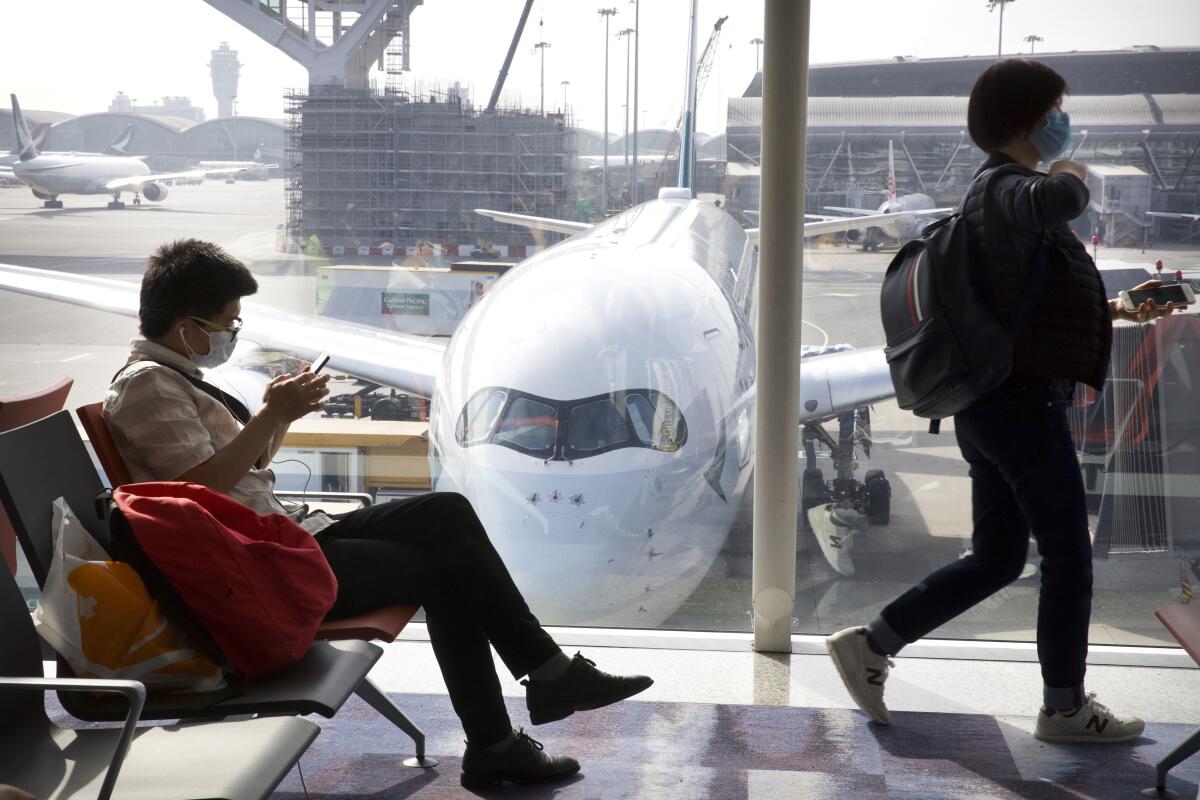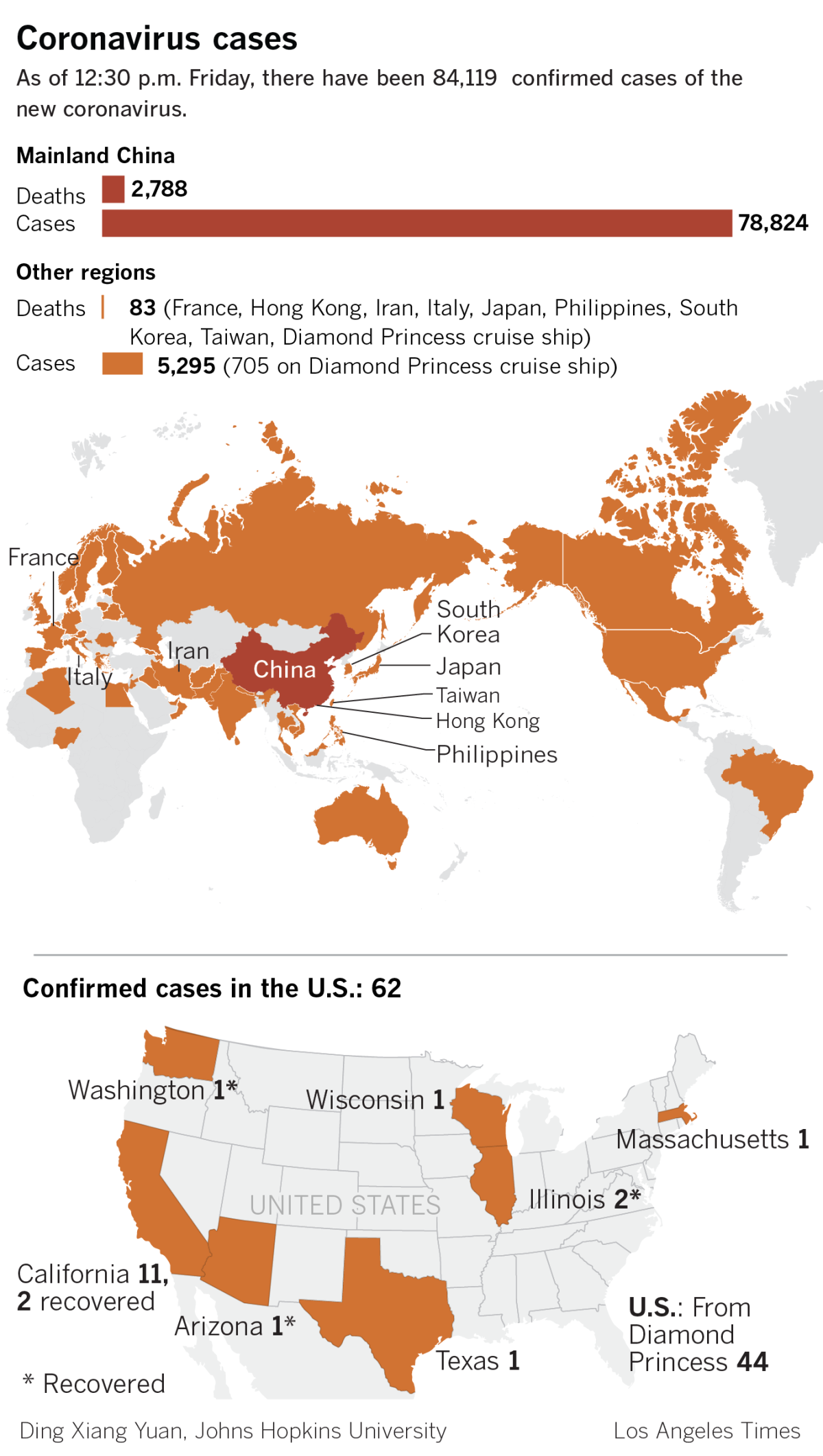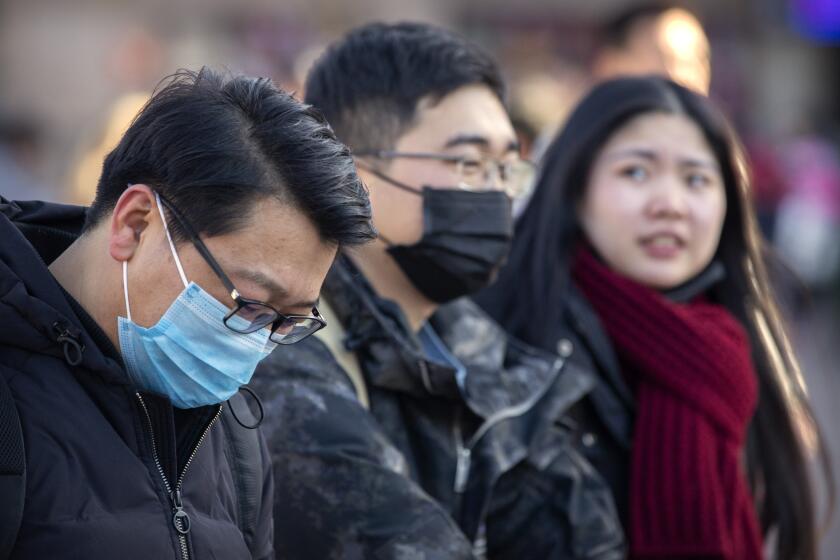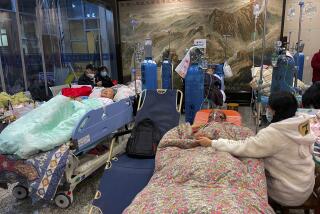Q&A: What is coronavirus? What you should know about the virus behind the outbreak in China

- Share via
Health officials around the world are keeping a close watch on an outbreak of a new virus in China, which is spreading around Asia and has reached the United States. Governments are responding with stepped-up surveillance of airline passengers arriving from the affected area to try to keep the outbreak under control.
Here’s what you should know about the coronavirus at the center of the outbreak.
What is making people sick?
Scientists have identified it as a new kind of coronavirus.
There are many known types of coronaviruses. Some cause the common cold. Others found in bats, camels and other animals have evolved into more severe illnesses such as SARS (severe acute respiratory syndrome) or MERS (Middle East respiratory syndrome).
When was the new virus found?
The outbreak started late last month in the city of Wuhan in central China, apparently at a food market.
How many people have it, and how widespread is it?
About 300 cases have been identified. There are about 260 cases in Wuhan, according to Chinese officials. Cases in other Chinese cities, including Beijing and Shanghai, total around 30. They were reported with the onset of an annual travel rush for the Lunar New Year holiday.

Many Chinese travel abroad for the holiday and a few cases have been confirmed outside the mainland — in Washington state as well as in South Korea, Japan, Thailand and Taiwan. That travel rush is expected to spread the disease more widely.
An man in Washington state has been sickened by the new coronavirus spreading through Asia, marking the first confirmed case in the U.S.
What are the symptoms?
Common symptoms include a runny nose, headache, cough and fever. Shortness of breath, chills and body aches are associated with more dangerous kinds of coronavirus, according to the U.S. Centers for Disease Control and Prevention.
How are coronaviruses spread?
Many coronaviruses can spread through coughing or sneezing, or by touching an infected person.
Initially, authorities in China said there was no evidence of human-to-human transmission in the present outbreak. But an expert panel has concluded there have been at least a few cases of people catching it from others, raising the possibility it could spread more widely.
China coronavirus: 440 cases reported, including 9 deaths, as millions travel for the Lunar New Year
The coronavirus outbreak, which has killed 9, began at a seafood and live animal market in Wuhan. It can spread among humans, officials confirm.
Could it be as bad as SARS?
So far, the virus appears less dangerous and infectious than SARS, which also started in China and killed about 800 people. As of Tuesday, six deaths had been reported, all in Wuhan. Viruses can mutate into more dangerous and contagious forms, and it’s too early to say what will happen with this one.
Why is it called a coronavirus?
Corona comes from Latin and refers to crowns or halos. Under a microscope, these viruses resemble crowns or halos.








